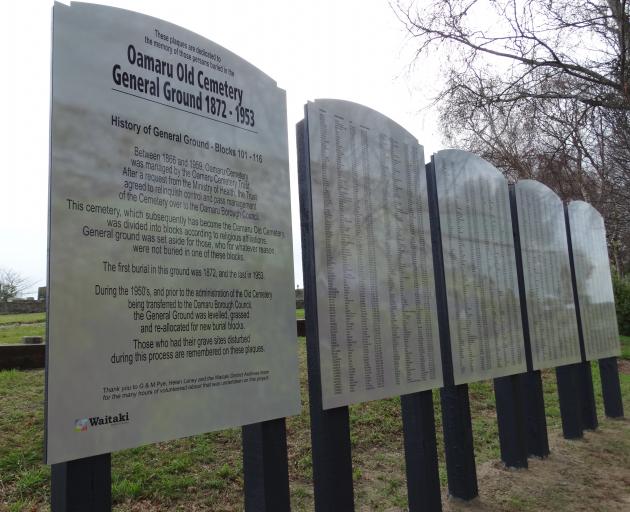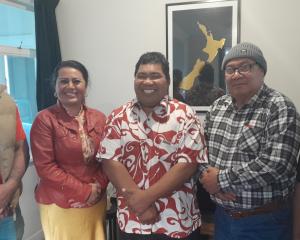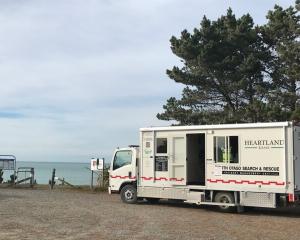
In 2014 Geoff Pye, now based in Cromwell, approached the Waitaki District Council with the suggestion appropriate signs be put up at the cemetery with the names, burial dates, block and plot numbers and, where available, maps or plans of the old general ground area that was disturbed in the 1950s.
Between 1866 and 1959, what is now known as Oamaru Old Cemetery was managed by the Oamaru Cemetery Trust.
At the request of the Ministry of Health, the trust agreed to pass management of the cemetery to the Oamaru Borough Council.
The cemetery was divided into blocks based on religious affiliations and general ground was set aside for those who, for various reasons, were not buried in the allocated blocks.
The first burial in the general ground was in 1872 and the last in 1953.
During the early 1950s, the ground was levelled, grassed over and re-allocated for new burial blocks.
The more than 900 people who had their graves disturbed were initially recognised with a plaque and more recently, have had their names published on panels installed at the cemetery with their name, age and date of burial.
They range from infants a matter of minutes old to people well into their 80s.
Mr Pye said he was driven to have them recognised after he started researching his own family history and discovered two of his grandfather's brothers had been buried in the lost graves area.
That meant trawling through burial records, which more often than not did not add up.
"None of them seemed to run together - they were all out of sync."
He uncovered plenty of stories along the way - especially about those who died young or middle-aged.
"There was generally a story behind why they passed away, whether it was an accident, a suicide or a drowning. A lot of these people were new to the country, something happened to them and there was no way of getting information back to the family ... in England, Australia."
He said having the names published on the panels was fitting. "It's an acknowledgment. It tells a story."












